Harvest Update – 8/29/19
Hey Winemakers!
Our growers are officially harvesting in California! Click the link below to hear more about our upcoming wine grape and wine juice arrivals. As well as information about our new offerings of wine grapes and wine juices.
http://bit.ly/HarvestUpdate082919
Video Notes:
Harvest has begun in Central Valley around August 28th with grapes and juices arriving after Labor Day – As early as Wednesday September 4th.
The first grapes will most likely be Albarino, Alicante, Barbera, Carignane, Chardonnay, Mixed Black, Muscat, Petite Syrah, Pinot Noir, Pinot Grigio, Syrah, Thompson Seedless, and Zinfandel. From Central Valley and King’s River Ranch
New items added to our offerings list this year.
RR Pinot Noir – from the Slusser’s family ranch. They have owned their ranch in Sonoma, specifically the Russian River Valley since 1848. They traded cattle with the Indians for the original property. Caroline, the vineyard manager is 6th generation farming her family’s wine grapes. Should be some epic Pinot Noir coming from that vineyard!
New and interesting grapes added to the menu are Touriga National, Teraldego, and Black Muscats. Some of the Musto Crush Crew created some wines from these grapes this year. Feel free to reach out to us for more information and winemaking recipes.
Washington State: Wahluke Slope has one of the driest, warmest climates in the state, allowing nearly complete control of vine vigor and ripening through irrigation. Washington State is worth the wait!
Lanza Musto Petite Sirah and Brunello Clone Sangiovese are looking great! SB should be harvested in the next two weeks.
Keep an eye on our Harvest Tracker and Juicegrape.com Blog for real time grape and juice arrivals, as well as harvest updates and helpful winemaking tips information.
Please reach out to us with any questions via email or phone.
877-812-1137 – sales@juicegrape.com
Happy Wine Season!
SOS: Sluggish/stuck fermentation
Many a winemaker has lamented the dreaded stuck fermentation. With so much to deal with during harvest time, the last thing you should be worried about is a ferment that has just up and quit. But sometimes it happens – knowing what to do when it does will be a life saver during an otherwise potentially unfortunate moment in a wine’s life. We’re here to walk you through how to handle this, what to do, and most importantly, how to do it.
Step 1: Think about why it may have gotten stuck
This is going to help you moving forward, both with this wine and with future ferments. Was there too much sugar in the juice or must to begin with? Was the fermentation temperature too cool or too hot? Did you choose a yeast that doesn’t do well with high sugar levels? Were nutrient levels too low?
Considerations before restarting
- Adding lysozyme can halt spoilage organisms which are often present in sluggish or stuck fermentations
- Resuke can lower toxin levels that have accumulated which will give you a better chance for a healthy restart. If you add this you will rack off of it 1-2 days later.
- Incorporate Go-Ferm and Go-Ferm Protect Evolution to ensure health of ensuing restarting fermentation
- Carefully choose what yeast you will re-pitch with. 43, 43 Restart, Fermivin Champion, K1 (V1116), Vin 13, BC, and DV10 are great choices.
Step 2. Add a complex yeast nutrient
This is going directly into the stuck wine tank. If you think you may have a spoilage bacteria problem, this is the time you would be adding lysozyme.
Step 3. Combine equal parts stuck wine and water in another vessel
This is known as the “mother restart tank.” At this moment it will be totaling 2% of whole volume.
Step 4. Rehydrate yeast nutrient + yeast as you would when pitching yeast the first time
This is the exact same process you did during the initial yeast pitch.
Step 5. Add the yeast to the mother restart tank
As always, there should be a <18F difference between the yeast mixture and the mother restart tank liquid temperature.
Step 6. Add 10% of the stuck wine to the starter culture
Wait 20-30 minutes.
Step 7. Add 20% of the stuck wine to the starter culture
Wait 20-30 minutes.
Step 8. Repeat until the remainder of the stuck wine has been added to the mother restart tank
Don’t skimp on waiting the 20-30 minutes at each of the following steps. Give it time to acclimate!
How to Make Tomato Wine
A few years ago at a Musto Grape Company Competition awards banquet, the keynote speaker started his presentation by asking
“So where’s this guy that makes tomato wine?”
I was taken by surprise, but stood up and took my bow. I had brought several bottles of Sangiovese, which was Best of Show that year, but only one bottle of tomato, which was quickly sampled up.
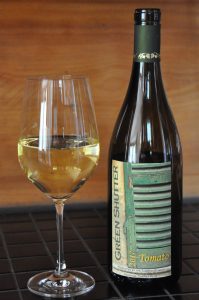
Why tomato wine?
My wife Jan grows many fruits and vegetables on our property, most of which I have made wine from. The idea for tomato wine was not mine, however, as I use Jack Keller’s website for most of my fruit wine recipes. One year, we had a plethora of tomatoes and had enough sauce, so I found a recipe and decided to try it.
The first few years I made it, you really couldn’t taste the tomato, and while we really liked it, it never faired well in competition. So we added a few more tomatoes for the “big tomato taste,” as one judged said it was lacking. Since then the wine has won several medals and is a favorite of many of our friends.
When I was asked to write about this wine, it was suggested that I don’t have to give away any secrets. There are only a few that I will divulge now…
First, I use a large variety of tomatoes, cherry, plum, beefsteak, etc. This adds to the complexity of the wine. Second, freeze the fruit. This accomplishes two things. First, it helps to break down the fruit making it easier to work with, and second, you don’t have to pick it all at once. As they ripen, pick, clean and freeze. When you are ready to make wine, thaw for a day or so and you are ready to go.
Enough talk. Here is the recipe I use for 6 gallons of wine (I have made up to thirty gallons at one time)
- 18 lbs. of tomatoes (you can vary this to suit your own tastes)
- 12 lbs. of sugar (more on that later)
- 12 tsp of acid blend
- 3 tsp of pectic enzyme
- 1 tsp of grape tannin
- 6 tsp yeast nutrient
- 2 oz of oak chips (medium French)
- 1 oz of oak dust
- Water to desired volume
- Yeast (I use EC-1118)
After the tomatoes have thawed, I squeeze them in a hydraulic press to get the juice (save the skins).
That way I can better control the amount of must I will end up with. Now, for the sugar, you need to creep up on this. Add water to less than the volume you want and check the specific gravity.
Then add ½ the sugar from the recipe and check again. I have chaptalization formulas I use to help here, but you need to be careful at this point. I typically want a S.G of around 1.090 for my fruit wines. Once you have the right volume and S.G, put the skins back in, along with the chips and the oak dust, and the remaining additives. I use EC-1118 as it is dependable. I have tried K1V-1116 but the formation is way too vigorous (tomato volcano).
Now treat it like any other wine, ferment to completion, squeeze the skins, let it settle, clarify, filter and bottle. You can back sweeten it, but we like ours dry.
You will end up with a light golden wine with that “big tomato taste.” Enjoy.
By Guest Blogger & Winemaker – Eric Albetski
2019 Wine Grape & Juice Harvest Report
Harvest should begin in Central Valley around August 28th with grapes and juices arriving after Labor Day. This year’s crop has had moderate temperatures all summer and our grapes look fantastic. The crop is looking to be of normal size with normal ripening and tentative harvest dates.
2019 Wine Grape Update:
Suisun Valley: The Lanza-Musto Vineyards Petite Sirah is thriving! Developing into a colossal, intense grape, our Petite Sirah is looking to be one of the top grapes of 2019. The Suisun Valley grapes should start harvesting around the 3rd week in September. Did you know that Lanza-Musto Vineyards has been certified by the California Sustainable Wine Growing for our vineyard practices? This is a certification that happens every year where we must uphold the standards of sustainable wine grape growing.
Lodi: We have a new Ranch coming on board with us this year from The Mettler Family. Mettler Family wines is home to brother and sister – Adam Mettler and Kelly Costamagna. Adam was recently named winemaker of the year and Kelly runs the wine distribution end of the business. Some of you might have met Kelly at our Winemaker Dinner last winter. We will have a lot of interesting wine grape varieties coming out of the Mettler vineyards such as Viognier and Pinotage. We will also have some wonderful Old Vine Zinfandel from Zinderella, see the vineyard by clicking HERE and other high quality grapes from the Costamagna Vineyards. The Mettler Family, Zinderella, and Costamagna Vineyards have all been certified by the LODI RULES Sustainability program! You’ll be able to tell by the special seal on the label. We have put together a blog post that explains how the LODI RULES Sustainability certification works. Click HERE for more information.
Central Valley: These will be some of the first grapes on the dock! The Central Valley grapes are hitting 19 and 20 Brix! It will only be a matter of time before they arrive. One of our Ancient Vine grape growers walks us through the vineyard during verasion. Click HERE to see how the wine grapes are developing. We will have Ancient Vine Alicante, Carigane, Grenache, Barbera, and Muscat available this fall. Also, Frank Musto’s Black Muscat will be rolling this season. Ask Christina about how to make Black Muscat wine, she made a batch this past fall! Also, the King’s River, Tempranillo is looking delicious. We had a lot of great feedback on this variety. If you’re looking for something new to try, check it out.
Washington State: We will have three vineyards providing fruit for us from Washington State this year! Our Rattlesnake Hills Vineyard, and our newest Wahluke Slope and Red Mountain Vineyards. We are very excited to bring these new vineyards to you. Check out our Cabernet Franc and Cabernet Sauvignon and see what these new vineyards have to offer!
New offerings for 2019: Russian River Pinot Noir (will probably be the only season we will be able to receive this awesome fruit!), Sonoma Attwood Ranch Cabernet Sauvignon, Contra Costa Italian grape varieties, Paso Robles grapes, and additional Ancient Vine offerings.
Give us a call or shoot us an email to discuss your 2019 wine! 877-812-1137 – sales@juicegrape.com
2019 Wine Juice Offerings:
California: We have many labels of high quality juices coming in from California this fall. Cry Baby, Bella California, Lodi Gold, California Select, and Colina del Sol, just to name a few. The fresh juices are stored at 35 degrees and arrive as if the juice just came out of your wine press. You can either hit the juice with SO2 and inoculate with your chosen yeast, or you can let the juice warm up and ferment using the native yeast found in the skin of the crushed/pressed grape.
Fresco Juices: Mosti Mondiale Fresco is proud to be the only product to offer home winemakers their own vineyard in one unique package. Each pail is carefully pre-balanced, inoculated with the perfect yeast, and infused with liquid enzymes to help create a delicious and palate pleasing wine. The Fresco juices come from California, Austrailia, and Italy.
Italian Juices: Our Italian juices will arrive in late October. The Italian juices are always full of flavor and provide palate pleasing, age worthy wines.
Give us a call or shoot us an email to discuss your 2019 wine! 877-812-1137 – sales@juicegrape.com
We know that was A LOT of information. If you have any questions or would like to discuss your potential order, please do not hesitate to reach out. We look forward to helping you with this year’s vintage!
Sincerely,
The Musto Crush Crew
877-812-1137 – sales@juicegrape.com
LODI RULES in Sustainable Farming
So, you want to learn more about Lodi wine region?
Are you are interested in California wine? If so, chances are you’ve been on the up and up with what’s happening in Lodi. A fantastic climate, strong traditional roots, and multiple generations of winegrowers are paving the way for sustainability measures. This has led to the creation of the LODI RULES seal, a green stamp appearing on the back labels of certified wines much as you would find a “USDA Organic” sticker. Click here to see which of our Lodi wine grapes are LODI RULES certified –> LODI RULES – Musto Wine Grape
As California’s original sustainable viticulture certification program, this seal is representative of a producer’s commitment to stewardship and respect for the land. It is a symbol of transparency in all things related to sustainable viticulture. The certification does not approve only one aspect of winemaking. It looks at the whole of the process, from farm to vine to bottle. While over 150 wines bear the LODI RULES seal, not just any winery can use this seal on their labels. The wines must have 85% certified sustainable grapes and be able to prove this. This then gets confirmed through third party accreditation and auditing.
There are two layers to the accreditation
1. Wineries must agree to “The Standards” of the certification, which include 100+ sustainability measures, in addition to following a unique pesticide risk model. The Standards are comprised of sustainability related to
- business
- human resources
- ecosystems
- soil
- water
- pests
2. Wineries must follow the Pesticide Environmental Assessment System (PEAS), used to gain an understanding of the impact of pesticide use within the vineyard. This is then used to generate a quantifiable environmental impact unit through which the effects and range of pesticide application can best be understood within the local ecosystem.
The Lodi AVA is setting a fantastic example by supporting the land that retains some of this country’s oldest vines. Lodi Rules is imparting a new standard in its meticulous regulations, leading other wine regions following suit after realizing how successful this certification has been for the region. Keep up to date with the progressive measures this winemaking region is taking to best care for their land, and be sure to look for the LODI RULES label on your next Lodi bottle. And this fall, be sure to find your very own Lodi wine grapes here at Musto Wine Grape Co.
2019 Winemaking Class Schedule – *UPDATED*
Musto Wine Grape’s Updated Winemaking Class Schedule
Oak Alternatives Class
- Saturday August 17th at 10:00AM
- Cost: $4.99 + tax
- Link: http://www.juicegrape.com/oak-alternatives-class/
Fermentation Planning Class
- Saturday August 24th at 10:00AM
- Cost: $4.99 + tax
- Link: http://www.juicegrape.com/Fermentation-Planning/
Making Consistently Flawless Wines with Daniel Pambianchi
- Focused in fermentation science, both alcohol and malolactic, understanding and managing pH and TA changes during fermentation, and advanced wine analysis skills.
- Saturday September 7th
- Cost: $250.00
- Link: http://www.juicegrape.com/Seminar-Daniel-Pambianchi/
Winemaker Bootcamp
- Musto’s hands on winemaking class. Learn how to make wine in class from start to finish.
- Session 1: Starts Saturday September 21st – 9:00AM-12:00PM for 5 consecutive weeks
- Sessions 2: Starts Saturday October 19th at 1:00PM-4:00PM for 5 consecutive weeks
- Cost: $150.00 for class
- Cost of Adding Grapes: TBD – depends on which grapes the class is working with. You will find out the this cost the day of class
- Link: http://www.juicegrape.com/EDUIBL-5-WEEK-WINEMAKING-BOOTCAMP/
Winemaking 101
- Learn the basics of making wine at home
- Date: TBD
- Cost: $75.00
- Link: http://www.juicegrape.com/Education-Intro-to-Wine-Making-101/
Winemaking 201
- Learn the basic lab skills needed to take your winemaking to the next level
- Date: TBD
- Cost: $75.00
- Link: http://www.juicegrape.com/Education-Intro-to-Basic-Lab-201/






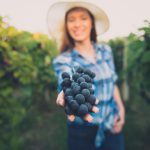

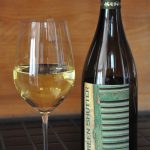
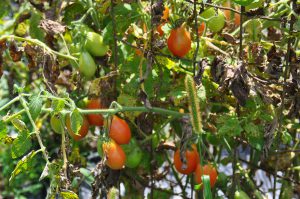
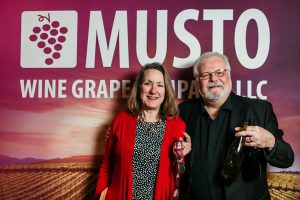
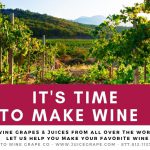
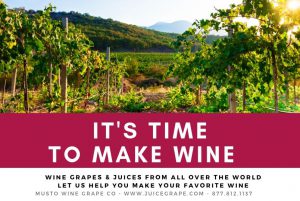
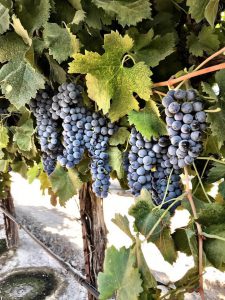
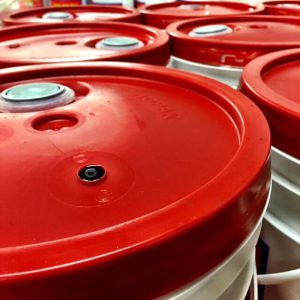
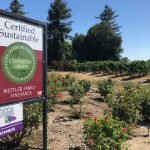
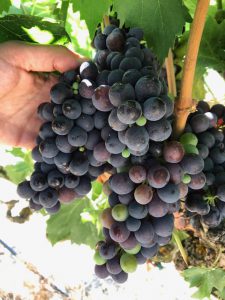


Recent Comments